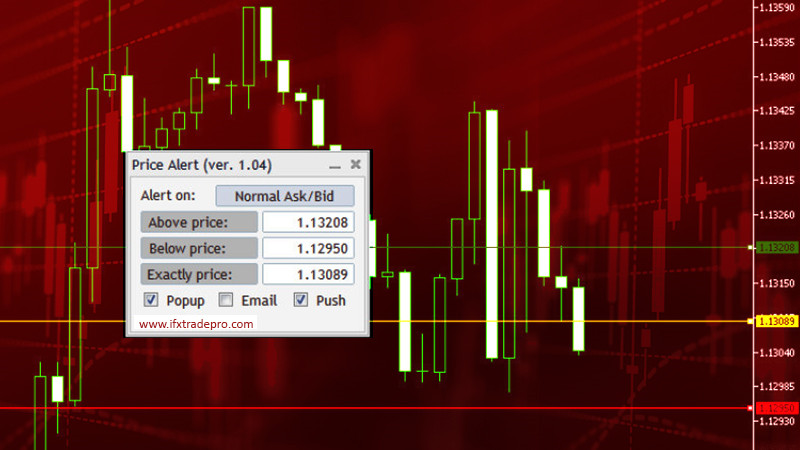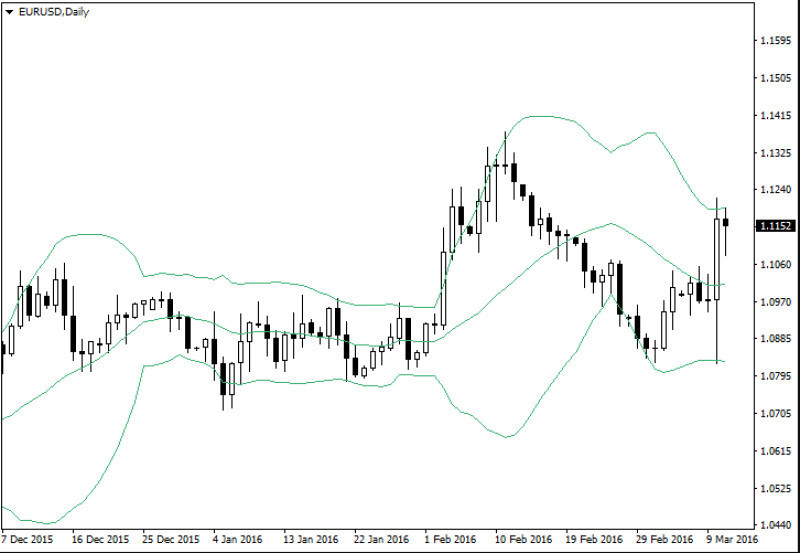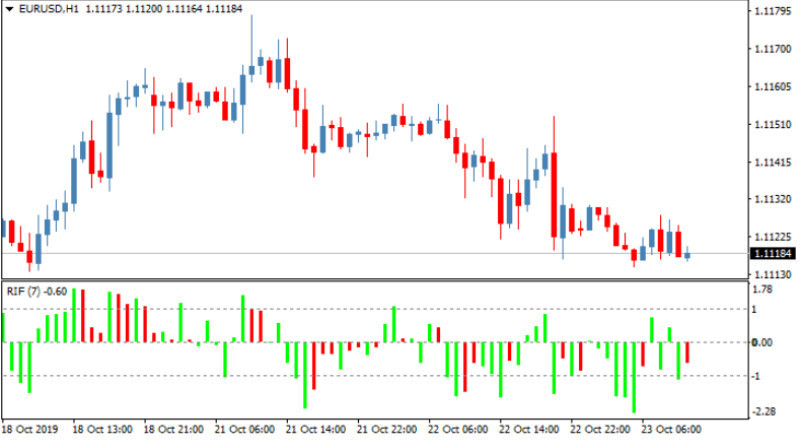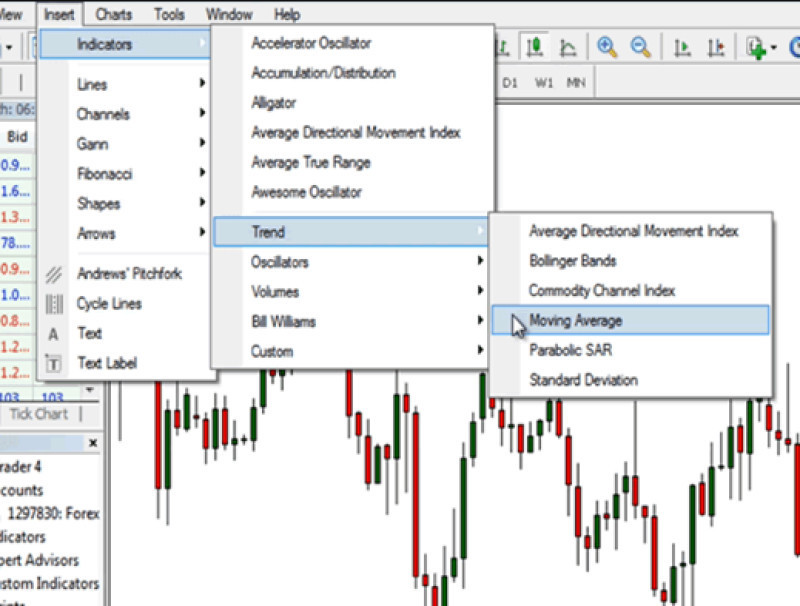
The significance of selecting the right trading platform for a trader cannot be overstated. A comfortable and functional trading terminal is one of the most crucial tools in trading on global financial markets. The success and profitability of the trading process largely depend on the convenience and effectiveness of the trader's workspace.
A trading terminal needs more than just visual simplicity and an intuitive interface; the speed and ease of executing trades are equally important. While market novices initially require a trading platform that assists in quick entries and exits from trades, seasoned traders demand much more.
Experienced market players delve deeply into the capabilities and settings of their terminals. They read numerous books, study instructions, and watch YouTube tutorials to gain knowledge about effectively using the toolkit of their trading platform. Market experts understand that maximizing the potential of their trading workspace can significantly improve results and increase the number of profitable transactions.
Indicators are one of such useful tools that potential investors often want to learn about first. Therefore, today's article is dedicated to the topic of installing trading indicators on the MetaTrader 4 platform.
The question "How to install an indicator in MT4" needs to be broken down into sub-questions: "What are indicators and why are they needed for?" and "How to install these tools on the trading platform?" In this guide, we will navigate through these crucial points to enhance your trading experience on MT4.
What are indicators in trading?
Let's delve into our first query. With the help of indicators on a trading platform, traders obtain both qualitative and quantitative information necessary for technical analysis.*
These tools, grounded in mathematical calculations, are applied across various timeframes* to enhance traders' understanding of price movements. In simpler terms, indicators are computations based on the volume of the traded asset and its value.
Since the advent of online trading, a plethora of indicators have emerged, aiding in market trend analysis, calculating the average values of traded assets, measuring volatility, and more.
Furthermore, these indicators are instrumental in formulating a personal trading strategy, adaptable to any financial market of your choice.
However, it's crucial to understand that there is no one-size-fits-all indicator for all traders. Their application depends on your preferred trading style and the specific outcomes you expect from trading.
Main types of indicators in MetaTrader 4
Despite this diversity, three primary types of indicators are commonly used by traders in online trading on the MetaTrader 4 platform: trend indicators, volatility indicators, and momentum indicators.
Trend Indicators
Often, overlooking the vast array of online trading methods, most modern traders prefer the classic approach of trend trading. It enables the identification of the prevailing market movement.
Correctly identifying a trend not only significantly boosts a trader's chances of profiting from price movements but also opens the door to entering trades with an optimal risk-reward ratio.
Thus, trend trading significantly increases the chances of a winning trade. An added advantage of this strategy is that it is applicable across all markets and timeframes.
To simplify and profit from trend trading, MetaTrader 4 users can employ numerous trend indicators.
These mathematical calculations help determine the direction and strength of a trend, as well as potential reversal points.* Such indicators are widely used by traders and are particularly popular among market newcomers, assisting them in correctly identifying the trend direction and market tendencies.
It's important to understand that a clear signal for opening a trade with the trend is given by an indicator only when there's a distinctly defined trend in the market.
The category of trend indicators comprises a vast array of tools. Some are considered classic and are included in the standard set of the MetaTrader 4 trading terminal.
Other trend indicators are developed by traders and come as modifications of traditional tools with more advanced capabilities, often without lagging.
The most popular and prominent among trend indicators is undoubtedly the Moving Average. This technical tool represents the average price of a traded asset over a specified time period. The Moving Average helps accurately assess momentum, confirm market trends, and identify support and resistance levels.
In other words, this indicator smooths out various distracting 'noises' that occur during the interpretation of a trading chart, including price fluctuations and volume.
Based on the Moving Average, market players have developed another widely-used trend indicator in MetaTrader 4 – the Bollinger Bands.

In this technical analysis tool, users can assess whether the current price is low (or high) relative to the moving averages over a recent period, and also predict the prospects of a drop (or rise) in the asset's value. The main task of Bollinger Bands is to assist traders in deciding whether to sell or buy a traded asset.
Volatility Indicators
It's well known that the currency market is characterized by endless fluctuations in quotes. Even when there's no pronounced upward or downward price movement, a flat market condition still provokes price changes, albeit within a minimal range.
Hence, one of the most in-demand categories of indicators on the MetaTrader 4 trading platform has become volatility indicators for currency pairs.
These technical analysis tools measure the volatility* of a price, providing traders with an analysis of the price change amplitude over a specific period.
Volatility indicators are often used to predict potential price movements. Thanks to their readings, market players can identify the current trend and use price amplitudes to plan successful trading strategies.
A key advantage of this technical analysis tool is its versatility. Currency market players worldwide apply volatility indicators regardless of the timeframe or trading strategy employed.
Moreover, these tools are effective for major currency pairs, cross rates,* and exotic pairs.*
While trend indicators also reasonably identify an asset's volatility, the most precise values can only be provided by specially designed volatility indicators.
When it comes to the most popular volatility indicator in the standard MetaTrader 4 platform set, it's the ATR (Average True Range).
With its help, traders get a graphical representation of the average range of changes over a certain period. ATR presents its final data as a line, similar to a moving average, within the specified range.
Another favorite among traders in the array of volatility indicators is XASER FV. This technical analysis tool determines the amplitude of price changes in currency at the closest history and the current moment. The principle of trend trading underlies the analysis of XASER FV indicators; that is, an order is opened in the direction of the dominant trend.
Thus, the indicator neutralizes flat moments and displays the start and end of a trend on the timeframe. These points become potential entry or exit points in the trade.
Momentum Indicators
Despite some traders complaining that the market lacks calm and stability, the majority prefer to trade during moments of agitation and sharp price movements. These scenarios often involve breaking through key levels followed by a retest.*
During such price fluctuations, also known as momentum movements, traders can swiftly and easily earn substantial profits. Thus, an impulse is a result of a price breakout from a prolonged sideways movement. Sometimes, such a spike might indicate the entry of a significant player in the market.
This leads to the utility of momentum indicators, which help calculate the speed of an asset's price movement by comparing the current closing price with previous closings.
Using these indicators, traders can develop various effective strategies. However, this tool is more suited to day traders than to those engaged in long-term trading. The reason is that within a day, impulses have minimal impact on the overall long-term movement.
One of the most common tools among momentum indicators is Momentum For MT4. It is used by traders to analyze and calculate the momentum of a price at a specific point in time. In its operation, the indicator provides both the momentum calculations and moving averages on one signal line.
The primary advantages of this indicator include its ability to instantly indicate the direction of the highest momentum on the timeframe.
Secondly, Momentum For MT4 is excellent for identifying trend reversals. This allows market players to closely monitor trading signals and accurately pinpoint moments of trend reversal or price change in the traded asset.
Another effective tool in the family of momentum indicators is the Relative Impulse Force. It acts as a filter for opening trades, enabling the identification of the start of a price correction in the traded asset.

The calculations of this indicator are based on determining the strength of the impulse, which aids in maximally predicting price corrections. This strength is measured by comparing the price and the moving average to the average values of increases or decreases.
The results of such calculations are displayed in an additional timeframe window as a histogram. Here, a green color indicates a stronger impulse upward or downward from the zero level. Meanwhile, red-colored bars signal a weaker impulse.
Having thoroughly explored the principles and purposes of the three most common groups of indicators in the MetaTrader 4 trading terminal, let's move to the question: "How to install an indicator in MT4?"
*Technical analysis refers to market tools that allow traders to assess the existing market situation and predict its potential change. Statistical patterns of price movements of traded assets are the main assistants for traders here.
*Timeframe is a time interval used to group quotes within the construction of multiple components of an asset's price chart.
*Trend reversal is a phenomenon in financial markets where the overall direction of the traded asset's quotes changes from downward to upward, or vice versa.
*Flat is a market condition where changes are almost imperceptible, and prices move within a narrow range.
*Volatility is a statistical indicator reflecting the degree of price change of a traded asset. In other words, it's the difference between the price highs and lows formed over a certain segment of the chart.
*Cross rate is the exchange rate of a currency pair that does not include the US dollar.
*Exotic pair is a Forex market currency pair consisting of the currency of a developing economy and the one of a developed economy.
*Retest is a trading phenomenon where the asset's price repeatedly tests a key support or resistance area. That is, after breaking through the trendline, the price returns to that line.
*Momentum is the rate of change of a financial asset's price over a selected period.
Installing indicators on MT4
It's worth noting that most of the technical analysis tools described above are already included in the basic configuration of the MetaTrader 4 trading platform. To apply them to your chart, simply go to the "Insert" menu and select the required indicator from the extensive list provided.
If you find yourself in a situation where you need to download and run an indicator, follow the step-by-step instructions below.
Step-by-Step Guide how to install an indicator in MT4:
- Typically, you can download a trading tool in the form of a zip folder. Unpack it and locate the folder that directly contains the indicator you need. To install it on your device, select the MT4 trading terminal from the list of programs on your PC. Once you have chosen the trading platform, open the folder where the indicator components are placed. Upon opening, the files will automatically be assigned the .ex4 and/or .mql extensions.
- Copy these files into the MQL4/Indicators folder, located in the data directory of the trading platform. To do this, enter the terminal and follow this path: File -> Open Data Folder.
- In the folder that appears on the screen, follow the path: MQL4 -> Indicators. Paste the chosen indicator into the Indicators folder.
- In addition to .ex4 and .mql files, your archive may contain a .dll file. If you encounter this scenario, place the .dll file along the path: MQL4 -> libraries.
- Next, in the top panel of the MT4 platform, select Tools -> Settings. On the “Expert Advisors” tab that appears, check the boxes for "Enable Advisors," "Allow Advisor Trading," "Allow DLL imports," and "Allow import of external Expert Advisors."
- Restart the trading terminal (turn off and turn on the platform again). Congratulations! You have successfully completed all the steps of the "How to install an indicator in MT4" guide and have enhanced your trading platform with a new tool!

If you prefer not to be tied to a specific location and like to keep everything you need for trading in your pocket, or more precisely, on your mobile device, pay attention to the following instructions.
To add a new indicator to the MetaTrader 4 mobile terminal on Android, press the "f" button located at the top of the Android Stock Exchange or Android MetaTrader applications. A default list of indicators included in the Mobile MT4 platform will then appear. Select the indicator you are interested in and press "OK".
To add indicators to the MT4 mobile platform on iOS, perform similar actions. Press the "f" icon at the top of the mobile trading application for iPhone. Alternatively, you can tap on the chart, after which a menu will appear where you can easily access the indicators.
How to use indicators on MT4
It's crucial to learn how to use the chosen and installed trading indicator correctly. For this purpose, follow the instructions below:
- Open the currency chart where you would like to set the indicator.
- On the top panel of the MT4 trading platform, select the Insert -> Indicators -> Custom button. Then choose the installed indicator.
- A window with the indicator's settings (which vary for each indicator) will appear. If you want to make any changes to the existing settings, do so and click "OK".
- Done! The chart with the added indicator will appear on your device's screen.
Note: If you decide to delete the trading indicator or make specific changes to it, use the Ctrl+I key combination. This will bring up the Indicators List, where you can select the necessary indicator and make changes.
Final thoughts
Before instructing you on how to install an indicator in MT4, we have taken the time to detail their features and functions. Why focus so much on these trading tools?
Indicators are vital aids for modern traders in the global financial markets. Here is a brief list of the useful capabilities of indicators:
- Simplify decision-making: indicators substantially simplify market players' decision-making process during trading.
- Accurate signals through mathematical algorithms: thanks to their embedded mathematical algorithms and automatic calculations, they provide traders with precise signals.
- Ideal for beginners: indicators are an excellent trading tool for beginners at the initial stage of trading.
- Enhance trading efficiency: they increase the efficiency of trading transactions and allow for profitable operations.
- Improve market prediction skills: indicators enable traders to enhance their skills in forecasting future market behavior.
- Determine entry and exit points: they are an ideal tool for determining the entry and exit points of a trade.
However, it's crucial not to place all responsibility for your trading decisions, profits, losses, successes, and failures solely on indicators.
Remember, financial markets are influenced by an infinite number of external factors that significantly impact their state.
While trading with indicators is based solely on precise mathematical calculations, they do not offer a 100% guarantee of success in trading.
Unfortunately for any trader, the price of an asset is not a static metric. It's incredibly dynamic, reacting to every change in demand and supply. Market supply significantly depends on current political and economic sentiments worldwide.
For example, sharp fluctuations in currency pair quotes can be caused by changes in a country's monetary policy, market reactions to fresh geopolitical events, news, key macroeconomic indicators, and even wars and pandemics.
We recommend that you pay due attention to all the above and then choose any of your preferred indicators as a reliable assistant in trading. With this approach, successful trading in the currency market is guaranteed!
You may also like:
How to add expert advisor in MT4
How to install two MT4 terminals








 Back to articles
Back to articles















